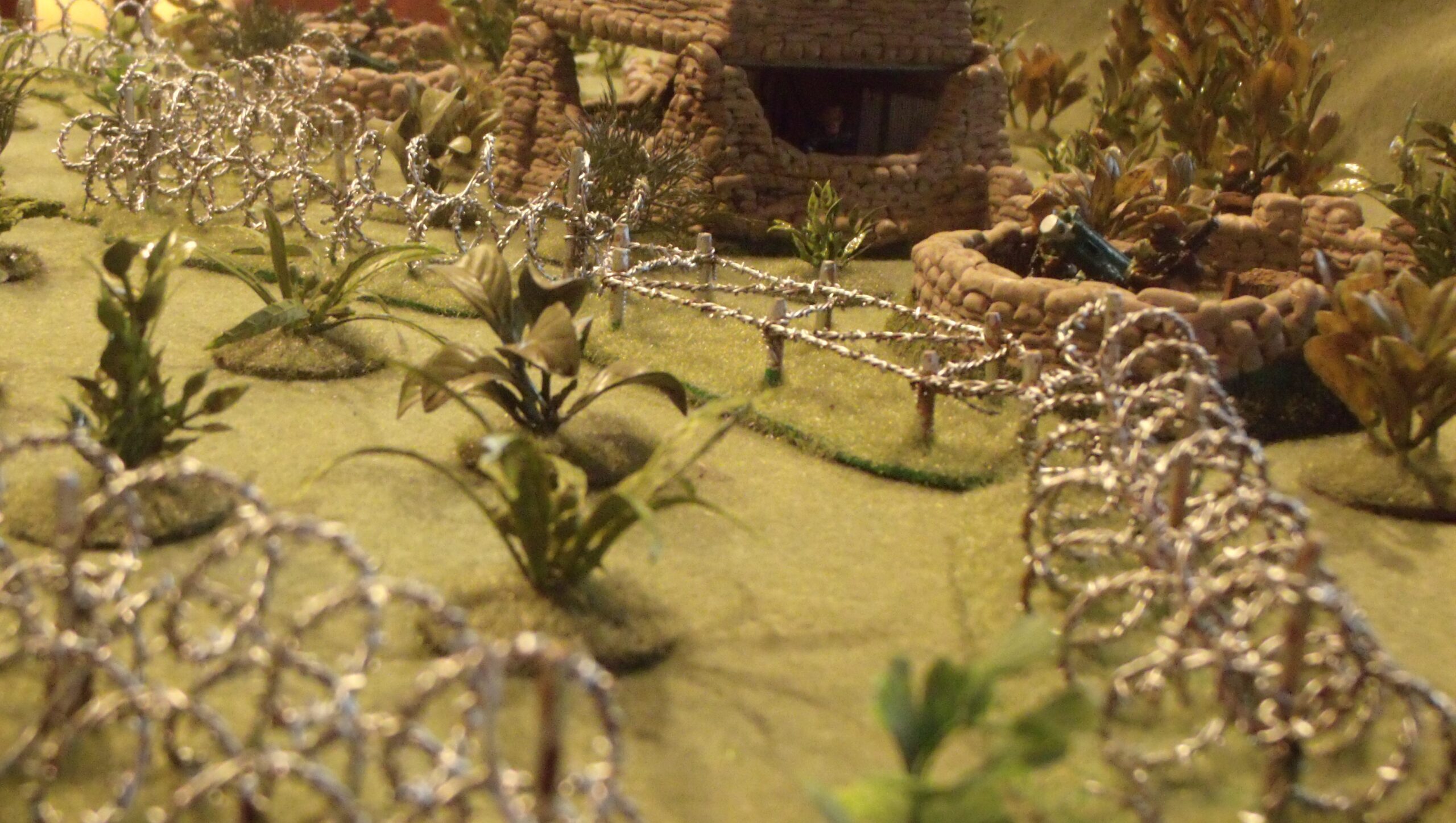
The Triple Strand Concertina may be the most common wire obstacle, but it is not the only one. If you are looking to add a little variety to your wire obstacles then you have a wide assortment of styles to choose from.
The Double Apron Fence
Before the invention of Concertina Wire, this was the battle field high end standard. Its major drawback is that it is very labor intensive to make (both in the real world and for gaming terrain). If you are looking for a challenge then give it a try. If not then just stick with the Triple strand since it does the exact same thing for a fraction of the effort.
Tangle Foot
It is not nearly as effective of an obstacle as some other types since it is very easy to step over once you see it. It does however have several advantages all its own so it is very frequently used. For starters it requires the least amount of material to make so it’s great to use whenever resources are limited. Because it’s so low to the ground (usually ankle to mid-calf high) it can be very difficult to spot, especially if vegetation has grown in. Because of this it’s the wire obstacle of choice if you don’t want the enemy to have prior notice that they will run into an obstacle. It’s also sometimes placed directly in front of heavy weapons since it is too low to interfere with the fields of fire.
Wire can even be used to stop vehicles! It’s not the first choice since something solid like Dragons Teeth will obviously work a lot better. It is, however, lighter than concrete (and therefore more portable) as well as very quick and easy to emplace. For these reasons it is commonly used as a vehicle obstacle.
A wire wrapped tightly around an axel of any vehicle will stop it. This is frequently easier said than done so vehicle obstacles will have as many wires stretched across as possible in order to increase the chances of something getting tangled.










